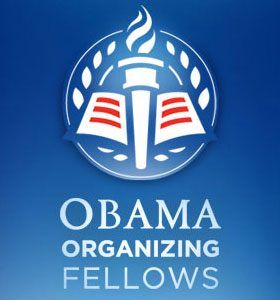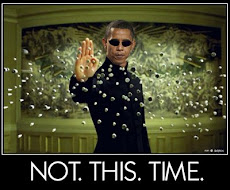Wednesday, February 26, 2020
Monday, February 24, 2020
Mutiny 1999 TV Movie
Would you believe this is a movie produced by Morgan Freeman about a true histocial
incident involving Black sailers in the U.S. Navy? There are also many familiar Black actors in this film. This is a matter I either forgot or did not know about that must never be hidden to our progeny over time. It is a part of the sordid history of Black people in this country and deserves to be properly acknowledged by all as to the way our people have been desecrated in this American society. We ourselves must recall our history in order to pave the way for advances for our race now and in the future.
This Fact-based story about 320 predominantly black sailors who were killed on July 17, 1944 while loading munitions on a ship in San Francisco.
. It also solidifies any claim for reparation in this country over the centuries. It also shows how this government degrades survivors who repudiate injustices. It thus serves as a warning as well as a motivation to fight back to achieve human dignity for all.
Commentary Found: Some of the the talk around town then and to this day, was that the soldiers (in uniform) were being forced/ordered by someone or “someone's” higher in the chain of command into dangerously “racing” to move the munitions in a game of pure folly. And that the clearly pointless tragedy was the genesis of the so called “mutiny”. or so the story goes. The story hasn’t changed in the 50 or so years since I first heard it told.
In 1944,a Victory ship exploded at the Port Chicago navy base near San Francisco killing 320 and wounding hundreds more. The victims were mostly untrained African-American sailors, forced to do the dangerous (and segregated) job of loading live munitions.When 50 of the shaken survivors refused to continue the hazardous duty without proper training and equipment, the most explosive military trail in the nation's history began.
The Slave Narratives
The Slave Narratives
The slave narrative is a type of literary genre involving the (written) autobiographical accounts of enslaved Africans in Great Britain and its colonies, including the later United States, Canada, and Caribbean nations. Some six thousand such narratives are estimated to exist;about 150 narratives were published as separate books or pamphlets.
The slave narratives, are accounts of the life, or a major portion of the life of slaves, of a fugitive or former slave, either written or orally related by the slave personally. Slave narratives comprise one of the most influential traditions in American literature, shaping the form and themes of some of the most celebrated and controversial writing, both in fiction and in autobiography, in the history of the United States. The vast majority of American slave narratives were authored by African Americans, but African-born Muslims who wrote in Arabic, the Cuban poet Juan Francisco Manzano, and a handful of white American sailors taken captive by North African pirates also penned narratives of their enslavement during the 19th century. From 1760 to the end of the Civil War in the United States, approximately 100 autobiographies of fugitive or former slaves appeared. After slavery was abolished in the United States in 1865, at least 50 former slaves wrote or dictated book-length accounts of their lives.
Narratives by fugitive slaves before the Civil War and by former slaves in the postbellum era are essential to the study of eighteenth- and nineteenth-century American history and literature, especially as they relate to the eleven states of the Old Confederacy, an area that included approximately one third of the population of the United States at the time when slave narratives were most widely read. As historical sources, slave narratives document slave life primarily in the American South from the invaluable perspective of first-hand experience. Increasingly in the 1840s and 1850s they reveal the struggles of people of color in the North, as fugitives from the South recorded the disparities between America's ideal of freedom and the reality of racism in the so-called "free states." After the Civil War, former slaves continued to record their experiences under slavery, partly to ensure that the newly-united nation did not forget what had threatened its existence, and partly to affirm the dedication of the ex-slave population to social and economic progress.
From a literary standpoint, the autobiographical narratives of former slaves comprise one of the most extensive and influential traditions in African American literature and culture. Until the Depression era slave narratives outnumbered novels written by African Americans. Some of the classic texts of American literature, including the two most influential nineteenth-century American novels, Harriet Beecher Stowe's Uncle Tom's Cabin (1852) and Mark Twain's Huckleberry Finn (1884), and such prize-winning contemporary novels as William Styron's The Confessions of Nat Turner (1967), and Toni Morrison's Beloved (1987), bear the direct influence of the slave narrative. Some of the most important revisionist scholarship in the historical study of American slavery in the last forty years has marshaled the slave narratives as key testimony. Slave narratives and their fictional descendants have played a major role in national debates about slavery, freedom, and American identity that have challenged the conscience and the historical consciousness of the United States ever since its founding.
After the abolition of slavery in 1865, former slaves continued to publish their autobiographies, often to show how the rigours of slavery had prepared them for full participation in the post-Civil War social and economic order. In Behind the Scenes; or, Thirty Years a Slave and Four Years in the White House (1868), Elizabeth Keckley chronicled her successful rise from enslavement in Virginia and Missouri to employment as the modiste and confidante of Mary Todd Lincoln. Former slaves who joined the post-Civil War working class began to publish their stories later in the 19th century, often articulating their disillusionment with specious promises of freedom in the North in the manner of Norvel Blair’s Book for the People…Life of Norvel Blair, of Grundy County, State of Illinois,
Found Voices : Slave Narratives The Full Broadcast -Nightline 1999
A Story of Slavery: A True Story, Repeated Word For Word As I Heard It
https://docsouth.unc.edu/neh/intro.html
https://www.britannica.com/art/slave-narrative
https://en.wikipedia.org/wiki/Slave_narrative
Sunday, February 23, 2020
Tuesday, February 11, 2020
Sunday, February 9, 2020
Ella Josephine Baker
Ella Josephine Baker
Ella Baker is one of the most significant pioneers of the civil rights era but was cast behind the scenes as women were often forced to take a backseat to men, even when fighting for common rights.
An African-American civil rights and human rights activist beginning in the 1930s. She was a behind-the-scenes activist, whose career spanned over five decades. She worked alongside some of the most famous civil rights leaders of the 20th century, including W. E. B. Du Bois, Thurgood Marshall, A. Philip Randolph, and Martin Luther King, Jr. She also mentored many emerging activists such as Diane Nash, Stokely Carmichael, Rosa Parks, and Bob Moses.
Ella Josephine Baker Dec. 13, 1903 – Dec. 13, 1986 was born in Norfolk, VA the daughter of Georgiana and Blake Baker. She was the middle of three surviving children, bracketed by her older brother Blake Curtis and younger sister Maggie. Her father worked on a steamship line that sailed out of Norfolk and was frequently away. Her mother took in boarders to earn extra money. In 1910 Norfolk had a race riot in which whites attacked black workers from the shipyard.
Her mother decided to take the family back to North Carolina while their father continued to work for the steamship company. Ella was seven when they returned to her mother's rural hometown near Littleton, North Carolina. Here she was regaled with stories about her ancestors and other Blacks who rebelled against slavery. She developed a sense for social justice early in her life. As a girl growing up in North Carolina, Baker listened to her grandmother tell stories about slave revolts. An enslaved woman, her grandmother had been whipped for refusing to marry a man chosen for her by the slave “owner.”
Miss Baker was an excellent student and attended Shaw University the oldest historically Black University in America,in Raleigh, North Carolina. In her book, “Ella Baker and the Black Freedom Movement,” Barbara Ransby explained how Ella’s background and upbringing would shape her path in life. Baker, she explained, was “nurtured, educated and challenged by a community of strong, hard-working, deeply religious people—most of them women—who celebrated their accomplishments and recognized their class advantage, but who also pledged themselves to serve and uplift those less fortunate.” With a focus on helping those less fortunate, Ella would leave the comforts and security of her hometown in order to bring change to the lives of the masses.
As a student she challenged school policies that she thought were unfair. After graduating in 1927 as class valedictorian, Baker moved to New York City and began joining social activist organizations. Baker worked as editorial assistant at the Negro National News. In 1930 George Schuyler, a black journalist and anarchist, founded the Young Negroes Cooperative League (YNCL). It sought to develop black economic power through collective networks. They conducted "conferences and trainings in the 1930s in their attempt to create a small, interlocking system of cooperative economic societies throughout the US" for black economic development. Having befriended Schuyler, Baker joined his group in 1931 and soon became its national director.
The Young Negroes Cooperative League, whose purpose was to develop black economic power through collective planning.She served as the publicity director and a board member of the Harlem’s Own Cooperative, a consumer cooperative which specialized in grocery goods and dairy products. A cooperative (often called a co-op) is an autonomous association of persons united voluntarily to meet their common economic, social, and cultural needs and aspirations through a jointly owned and democratically controlled enterprise. Baker saw that through the collective bargaining position that the co-op possessed, the individuals who were a part of it gained and maintained economic and political power. For the rest of her life, Baker would fight to empower people on an individual level by spurring them to be a vocal part of the group effort. She also came to believe that the true power to make change lay within the power of the individual fighting to determine their future rather than be led along by the nose by those who labeled themselves as the “leaders of the masses.” Baker also involved herself with several women’s organizations. She was committed to economic justice for all people and once said, “People cannot be free until there is enough work in this land to give everybody a job.”
She also worked for the Worker's Education Project of the Works Progress Administration, established under President Franklin D. Roosevelt's New Deal. Baker taught courses in consumer education, labor history, and African history. She immersed herself in the cultural and political milieu of Harlem in the 1930s. She protested Italy's invasion of Ethiopia and supported the campaign to free the Scottsboro defendants in Alabama, a group of young black men accused of raping two white women. She also founded the Negro History Club at the Harlem Library and regularly attended lectures and meetings at the YWCA.
Baker lived with and married her college sweetheart, T. J. (Bob) Roberts. They divorced in 1958. Ella Baker rarely discussed her private life or marital status. According to fellow activist, Bernice Johnson Reagon, many women within the Civil Rights Movement followed Baker's example, adopting a practice of dissemblance about their private lives that allowed them to be accepted as individuals within the movement.
Baker befriended John Henrik Clarke, a future scholar and activist; Pauli Murray, a future writer and civil rights lawyer, and others who would become lifelong friends. The Harlem Renaissance influenced Baker in her thoughts and teachings. She advocated widespread, local action as a means of social change. Her emphasis on a grassroots approach to the struggle for equal rights influenced the growth and success of the modern civil rights movement of the mid-20th century.
In 1938 Baker began her long association with the National Association for the Advancement of Colored People (NAACP), which was then based in New York City. In December 1940 she started work there as a secretary. She traveled widely for the organization, especially in the South, recruiting members, raising money, and organizing local chapters. She was named director of branches in 1943, and became the highest-ranking woman in the NAACP. An outspoken woman, Baker believed in egalitarian ideals. She pushed the NAACP to decentralize its leadership structure and to aid its membership in more activist campaigns at the local level.
She believed that the work of the branches was the NAACP's lifeblood. Baker despised elitism and placed her confidence in many. She believed that the bedrock of any social change organization is not the eloquence or credentials of its top leaders, but in the commitment and hard work of the rank and file membership and the willingness and ability of those members to engage in a process of discussion, debate, and decision making. She especially stressed the importance of young people and women in the organization.
She travelled throughout the south, organizing campaigns, recruiting members and doing fundraising. She was so successful that in 1943 she was named “Director of Branches.” In only five years she had risen to become the highest ranked woman in arguably the most powerfull Black organization in the United States. Her ascension, however, did not come easy, nor did it make her popular throughout the organization. She was very vocal about her belief in the need to decentralize the leadership of the organization and the need to place more emphasis in empowering members at a local grassroots level. She believed that an organization should be built from the bottom up and not from the top down and that the true strength came not from the polished words of its leaders but rather from the hard work, actions and decision-making of its rank and file membership. She particularly pointed out the need for participation by women and by youth within the organization, two groups that she would advocate time and time again.
While traveling throughout the South on behalf of the NAACP, Baker met hundreds of black people, establishing lasting relationships with them. She slept in their homes, ate at their tables, spoke in their churches, and earned their trust. She wrote thank-you notes and expressed her gratitude to the people she met. This personalized approach to political work was one important aspect of Baker's effective effort to recruit more members, both men and women, into the NAACP. Baker formed a network of people in the South who would be important in the continued fight for civil rights. Whereas some northern organizers tended to talk down to rural southerners, Baker's ability to treat everyone with respect helped her in recruiting. Baker fought to make the NAACP more democratic. She tried to find a balance between voicing her concerns and maintaining a unified front.
In 1946 she left her position with the national chapter of the NAACP and returned to New York to look after an ailing niece. She continued to volunteer with the local chapter, however, and joined the New York branch to fight against police brutality and school segregation. In 1952 she became the president of the New York chapter, but she continued to butt heads with members of the national bureaucracy and left the organization in 1953 to mount an unsuccessful campaign to run for a New York City Council seat.
She was a largely behind-the-scenes organizer whose career spanned more than five decades. In New York City and the South, she worked alongside some of the most noted civil rights leaders of the 20th century, including W. E. B. Du Bois, Thurgood Marshall, A. Philip Randolph, and Martin Luther King Jr. She also mentored many emerging activists, such as Diane Nash, Stokely Carmichael, Rosa Parks, and Bob Moses, whom she first mentored as leaders in the Student Nonviolent Coordinating Committee (SNCC)
There would not have been a SNCC without Ella Baker. While serving as Executive Secretary for the Southern Christian Leadership Conference (SCLC), she organized the founding conference of SNCC, held at Shaw University in Raleigh, North Carolina during the Easter weekend of 1960. She had immediately recognized the potential of the students involved in the sit-in movement and wanted to bring leaders of the Movement together to meet one another and to consider future work
Baker criticized professionalized, charismatic leadership; she promoted grassroots organizing, radical democracy, and the ability of the oppressed to understand their worlds and advocate for themselves. She realized this vision most fully in the 1960s as the primary advisor and strategist of SNCC.She has been ranked as "One of the most important African American leaders of the twentieth century and perhaps the most influential woman in the civil rights movement." She is known for her critiques not only of racism within American culture, but also of sexism within the civil rights movement.
Baker recognized that “the young people were the hope of any movement…They were the people who kept the spirit going.” As she knew, “the average Baptist minister didn’t really know organizing.” But Ella Baker did and the students, sensing her abilities, listened to her ushering in a new era in grassroots organizing.
Her belief was always that organizing people meant that they could lead themselves. After all, who else was better qualified to articulate their needs? She often said, “strong people don’t need strong leaders;” but facilitating this required extensive travel, conversation, and meetings. Baker was well-known for her indefatigable spirit.
Ella Baker: Making the Struggle Every Day
Cornel West's Thoughts On Ella Baker
https://daejagray.wordpress.com/tag/t-j-bob-roberts-interestingly/
https://en.wikipedia.org/wiki/Ella_Baker
https://www.zinnedproject.org/materials/baker-ella/
https://www.coaachhealth.org/black-history-month-ella-josephine-baker/
https://www.greatblackheroes.com/civil-rights/ella-baker/
https://www.pinterest.com/maryblackston0092/ella-baker/
https://famousbiographies.org/ella-baker-biography/
https://www.famousafricanamericans.org/ella-baker




















































